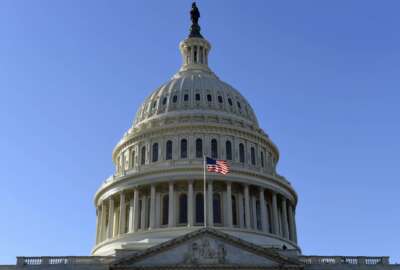
#MeToo movement prompts long-awaited budget boost for EEOC in 2018
The Equal Employment Opportunity Commission has $15 million more to spend for the rest of fiscal 2018 compared to previous years.
The Equal Employment Opportunity Commission is getting a long-awaited budget boost in the latest omnibus spending agreement to help the agency address a heavier workload of sexual harassment cases and severe staffing shortages.
EEOC has $379.5 million to spend during the remainder of fiscal 2018 — a $15 million increase over the previous year and more than the agency itself requested for this year or for 2019.
Funding for the agency was flat in fiscal 2017, and a temporary hiring freeze also left EEOC strapped for talented staff.
In its 2019 budget justification to Congress, EEOC said it still managed to fill critical senior vacancies and train front line employees despite these challenges.
But the American Federation of Government Employees, which represents some EEOC employees, applauded the 2018 appropriation and said the budget increase is much needed.
“The #MeToo movement highlights EEOC’s important work and leads people to our door,” AFGE Council 216 President Gabrielle Martin said in a statement. “Congress has shown its commitment to civil rights with this budget.”
EEOC’s attrition rate of 10.8 percent was more than double its hiring rate of 5.2 percent last year, according to the budget justification. It has 513 retirement-eligible employees now, and another 632 will be eligible in the next 10 years, the agency said.
As EEOC struggles to recruit new front line employees, AFGE local unions say the agency has too many managers. The agency has one supervisor for every five employees, the union said.
“While the commission has spent considerable resources on improving technology and providing efficiencies to better serve the public, these improvements will only get so far,” said Victoria Lipnic, the commission’s acting chairwoman. “For this reason, the commission is also committed to ensuring that our approved positions are up to date and to updating our agency’s succession plan to ensure that our staff is well-equipped and poised for the future.”
But the agency can’t meet its mission of resolving discrimination cases as quickly as possible without the proper level of staff, Lipnic wrote.
Recent events and the rise of the #MeToo movement has sparked additional interest and attention in the EEOC, Lipnic said, though the agency received more private sector cases — 91,503 cases in fiscal 2016 compared to 84,254 cases in 2017.
Other aspects of EEOC’s workload, however, have increased over the past year. The agency is holding more hearings, and it resolved far more private sector cases in 2017 — 99,109 charges — compared to the previous years.
EEOC’s federal program has also been busier in recent months.
“As of fiscal 2017, the hearings program received 8,012 hearings requests, and resolved 6,661 complaints,” Lipnic said. “Of those resolutions, 2,528 were merit resolutions (2,394 were settlements). The pending workload as of the first quarter of FY 2018 was 14,885. To address the federal sector backlog, and the increased number of hearings requests received annually, I have set aside funds to hire six additional attorney-examiners to address the volume of hearing requests pending and ensure that they, along with new requests, are timely processed.”
A council of EEOC local AFGE unions listed four priorities for the agency, including an investment in new digital charge and appointment technology and a restoration in front-line staffing.
“The union is sharing this wish list because we are on the front lines and know what would make a difference in more efficient service and help for those experiencing discrimination, including sexual harassment, and to prevent it in the first place,” Martin said. “EEOC must use the funding to help workers, rather than squander funding on case closure schemes that focus on quotas or inefficient mismanagement.”
EEOC spent much of 2017 reviewing its structure and processes to comply with the Trump administration’s reorganization initiative, Lipnic said.
“We have already begun reviewing position descriptions in order to ensure they properly reflect current job requirements, and in fiscal 2018, [we] will be convening a working group to look into cost savings through reducing the agency’s footprint,” the budget justification said.
Copyright © 2025 Federal News Network. All rights reserved. This website is not intended for users located within the European Economic Area.
Nicole Ogrysko is a reporter for Federal News Network focusing on the federal workforce and federal pay and benefits.
Follow @nogryskoWFED
Related Stories





